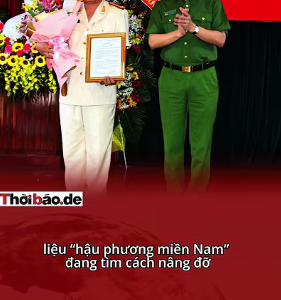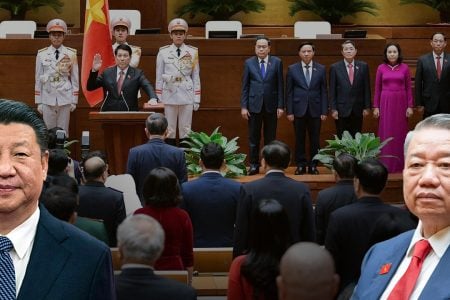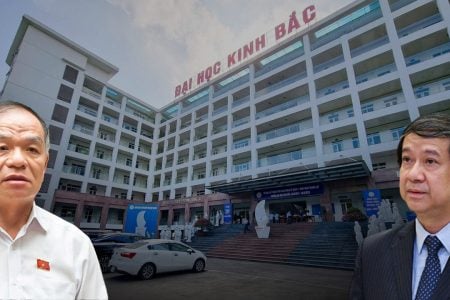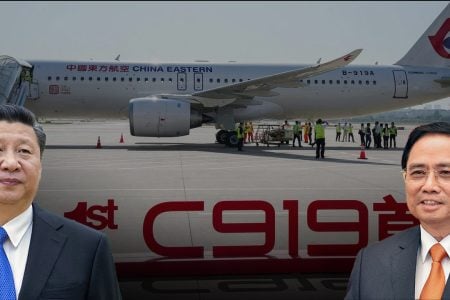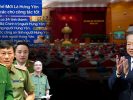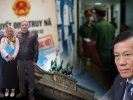
Political power in Vietnam is based on the ruling party and the distribution of power (and interests) between senior leaders in the secret room. So there are many conspiracy theories from side to side, man and woman, … Moreover, the Communist Party of Vietnam (CPV)’s media, since this party existed until now, is covered with words, elsewhere normal, but in Communist countries it becomes mysterious: the Party, the Government, the State, … besides the real mysterious words: Secretariat, the Central Organizing Commission, the Central Commission on Internal Affairs, Inspection Commission, etc. make the visualization of people outside, at home and abroad become more and more blurred.
There is a fairly accurate way of observing the power structure in Vietnam, which is based on the order in which the characters are announced.
With this observation, I see a temporary structure called the power core.
At the center of this core is the Politburo, then the Secretariat and the outside is the Party Central Committee. In these three layers, the innermost two layers have vertical order, the outer layer has no vertical order but equal horizontal order. These three classes are generally nested, the two inner layers are interlocking but not tight, only a few Politburo members are in the Secretariat, but all members of the Politburo and the Secretariat are members of the Central Committee, the outer shell.
Look at how the Vietnamese press publishes those three-shell lists. Order will be the person who has the most power to first get his name in the Politburo and the Secretariat, but when it comes to the list of the Party Central Committee, it will be arranged alphabetically.
There were times when people observed the list of hordes and orders to go to late President Ho Chi Minh’s mausoleum to locate power, but this way did not seem accurate anymore.
Nearly 200 members of the Party Central Committee (excluding the inner core groups of Politburo and the Secretariat), arranged alphabetically, have fairly equal authority, or are the top provincial officials (sometimes district level), or government ministries.
With the core structure of such a single ruling party, we will see that the two very powerful parts of the democracies are just decorative agencies in Vietnam, the National Assembly, and the main cabinet. The government has some power because it has to implement the instructions and policies of the three layers of power while the parliament is purely decorative.
Because there is little power left, all ministers must be members of the Party Central Committee, with important ministries to be held by members of the Politburo. In the list of government cabinet just announced on April 8, 2021, the two ministries of National Defense and Public Security are held by two members of the Politburo, namely Mr. To Lam, the Ministry of Public Security, and Mr. Phan Van Giang, the Ministry of Defense. Looking at it, we can say that the Communist Party considers these two very important ministries. Next is the Ministry of Foreign Affairs, with former Minister Pham Binh Minh, although he does not directly handle the daily work here, he is a Deputy Prime Minister and is still a member of the Politburo. Mr. Minh was ranked seventh in the list of members of the Politburo, after the „four pillars“ and two „pure party members“ Mrs. Truong Thi Mai and Mr. Vo Van Thuong.
Anyway, the Ministry of Foreign Affairs had a little more authority than before when the foreign affairs figures of the Party Central Committee (Le Hoai Trung), the Foreign Minister (Bui Thanh Son), and their former boss, Mr. Pham Binh Minh seem to be in the same group.
With this core structure of power, there will be what the Communists call political stability. With the base of the Central Committee and the top of the Politburo, the Communist Party will easily suppress opposing activities, because they control the entire society, in accordance with the concept of totalitarianism.
But this structure will have the disadvantage of making some parts of the government that are not interested (without members of the Politburo) easily confused and ineffective, typically the two Ministries of Health and the Ministry of Education and Training have a lot of scandals that will harm Vietnamese society in the long run.
But sometimes in areas as important as security, this core structure can also be devastating, because single-line decisions in the core do not take into account the parts involved in the process considered not as important. Two recent concrete examples are the kidnapping of Trinh Xuan Thanh in Germany and the persecution in Dong Tam. In the case of Trinh Xuan Thanh, the Ministry of Foreign Affairs was ignored while in the Dong Tam case, the Hanoi city’s opinion was ignored.
The core structure leads to a waste of power, that is, those who have power in order but have nothing to do. Out of the current 18 members of the Politburo, only two are Defense and Security Ministers, four of the four pillars, a Deputy Prime Minister, and two Party Secretaries, have specific things to do.
That is, we generously include Mr. Nguyen Phu Trong, who is the head of the Party. The rest, who have nothing concrete to do, will step on others. The problem is that purely Party-power remains in the Politburo cannot be appointed to important institutions like health or education.
This core structure is as difficult to replace as the democratic structures from below.
Saying political stability is fine, but it is okay to say that it is stubborn to not change.
And it’s quite interesting if we compare this core power structure with the wooden rings of a tree. The inner rings are older than the outer rings, when those rings die, the tree also dies.
Thoibao.de (Translated)
Source: http://www.viet-studies.net/kinhte/NguyenKhoa_CauTrucLoi.html



